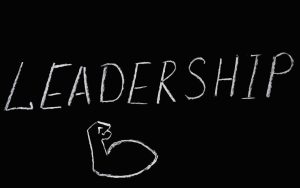Team conflicts are inevitable, even in the most cohesive groups. While a team might work well together, it’s almost certain that conflicts will arise at some point. However, the way conflict is managed is what truly defines a team’s success. Understanding individual strengths through tools like the HIGH5 test can be a game-changer in conflict management. By identifying each team member’s unique strengths, teams can proactively address potential conflict areas and leverage diverse talents to resolve issues more effectively.
If it’s not a team’s habit to address and resolve conflicts immediately, the team is probably going to keep on struggling. The result of poor conflict resolution is worse performance, less efficiency, and lower productivity within the team.
The good news is, there are a few strategies for conflict resolution that teams can endorse, which can prevent any dispute from taking a toll on the team’s performance.
In this article, we’ll explore what is conflict in teams, why they come up, and why its resolution is so important, as well as the strategies to solve them. We also take a look into the different types of conflict.
What is Team Conflict?
Conflict in teams arises when there’s a lack of agreement amongst two or more team members. They can take the form of arguments, problematic relationships, negative behaviors, or even aggressive actions.
These conflicts may stem from dissenting goals, values, or methods within the team, and result in a disruption to the workflow and negative team outcomes. However, conflicts aren’t inherently bad for the team – if solved in a holistic and constructive way, they can actually be beneficial.
Thus, whether a conflict affects the performance or not, depends on how its resolution takes place. It’s important to note that conflicts are not only common in teams, but they’re also a natural occurrence.
Teams are typically composed of diverse individuals, each bringing unique backgrounds, expertise, and perspectives. This diversity, while valuable, can also be a source of conflict. However, by utilizing strength assessment tools like the HIGH5 test, teams can transform these differences into assets. Understanding each member’s strengths allows for better appreciation of diverse viewpoints and more effective collaboration, turning potential conflict points into opportunities for innovation and growth.
Pro Tip From HIGH5
Leverage your team’s diversity by conducting a HIGH5 strengths assessment. Use the results to create a ‘Strength Map’ of your team, highlighting how different strengths can complement each other in problem-solving and decision-making processes.
Why Addressing and Solving Conflicts is Important?
Conflict management is a key teamwork skill to have, not only for leaders but for any valuable team player. While avoidance behaviors aren’t uncommon, if an organizational conflict is not immediately addressed, it can hurt morale and negatively affect the team’s performance.
Not to mention mental health costs to the employee. Tackling conflict can help create more positive bonds between team members and consequently contributes to a healthier work environment, which will prevent new conflicts from arising in the future. It all comes down to higher performance and productivity, both essential for any successful organization.

The following are some of the negative effects of conflict left unresolved:
- Decreased motivation
- Workplace stress
- Lowered morale
- Declined productivity and efficiency
- Poor team performance
Benefits of Team Conflict Resolution
It’s no secret that conflicts prevent achieving high-quality team outcomes – but that’s putting it simply. Actually, workplace conflicts can cause a range of negative effects.
A negative work environment can form, which impacts virtually every dimension of the team and its work. Accordingly, quick and efficient conflict resolution comes with an array of positive effects.
Teams that successfully overcome and learn from past conflicts tend to:
Have a higher performance
Instead of dwelling in a petty dispute and holding onto resentments or grudges, team members immediately move on from a conflict.
Consequently, they’re able to get their work done more quickly and efficiently, as they’re not stressing about unspoken tensions around the office, resulting in a more effective team.
Innovate more
Team members feel safe to give new and out-of-the-box ideas, as they know the rest of the team won’t judge or humiliate them, even if they are in disagreement with you.
Conflict in teams is seen as a constructive opportunity to learn something new and enhance creativity and innovation.
Become more cohesive
By overcoming conflicts together, team members can develop trust and appreciation in each other, which strengthens their interpersonal bonds and consequently improves levels of team cohesion. In turn, a higher cohesiveness is preventative of new conflicts arising.
Pro Tip From HIGH5
After resolving a conflict, conduct a ‘Strength-Based Retrospective’ using your team’s HIGH5 test results. Analyze how different strengths contributed to the resolution and how they could be better utilized in future challenges.
5 Conflict Resolution Strategies
It’s crucial for teams to endorse effective conflict management strategies to ensure their harmony is not disrupted by unfruitful arguments. Several strategies can be put into practice that aims to prevent and facilitate the resolution of all types of team conflicts.
Outlined below are 5 conflict resolution strategies:
Solve immediately
A big organizational conflict can stem from the smallest disagreement. At first, it may call for a simple resolution, however, if the team chooses to avoid it or sweeps it under the rug, it can escalate in proportion over time.
While some would rather avoid a confrontation, not talking about the “elephant in the room” will only worsen the tension between team members and cause an overall uncomfortable work environment.
Seeking to resolve conflicts in real-time, instead of letting team members painfully linger on the issue can make a big difference. A swift resolution will cause a lot less negative impact on the team’s outcomes.
Increase communication
Just as good communication is one of the key characteristics of high-performing teams, bad communication or lack thereof can lead to workplace conflicts. It’s near impossible for team members to agree on any matter if they’re not expressing their true opinions and viewpoints, nor engaging in active listening.
Not communicating properly will most likely lead to resentment and a grudgeful environment, and significantly lower performance. Thus, if coming across a conflict within the team, focusing on communication among team members is of utmost importance.
That means discussing the conflict itself, why it has become a problem and what might be causing it. Both parties in disagreement get to express their points, but both need to also listen and make an effort to understand each other’s side.
Be empathetic
Over the years, and thanks to authors like Daniel Goleman, it has become increasingly known that having a high level of emotional intelligence (EQ) is as (if not more) important as having a high intelligence quotient (IQ).
This is especially true for teams and, in general, any job in which you are required to work alongside other people. Possessing a strong EQ means having an increased ability to recognize emotions in both yourself and others, which allows us to be more aware and understanding of other people’s struggles.
For that reason, empaths make valuable team players and leaders, being overall more likely to succeed in a team setting. That said, if an interpersonal conflict arises, it’s important to ensure a fair resolution that takes into account both sides of the dispute.
Their points and concerns may differ, but they are surely both valid – at least to a certain extent. Facing their differences while being empathetic will promote mutual understanding. That will help get to a considerate solution that will leave everyone content and feeling like their voice is being heard.
Address the underlying issues
To find a good, long-term solution to a conflict, it’s imperative to start looking for its underlying issues. These may not be obvious at first, however, opening up communication and creating a psychological safety climate is key for a wider comprehension of where the conflict is stemming from.
Team members need to be able to share their honest viewpoints and safely show disagreement. This can be done by inciting the team to share true thoughts and concerns, rather than keeping secrets and holding grudges. In short, it’s important to cultivate a positive work culture.
Short-term solutions may work as a quick fix, but if the team’s not addressing the root of the problem, it will rise over and over again. Once the underlying causes are known, addressing them directly is always a stronger solution that will not only solve the conflict for good but also prevent future similar ones.
Find common ground
Team members need to share team values, which provide them with motivation and drive to work towards a common purpose. This is what makes a team work together as a united whole.
Better yet if the team’s vision and goals personally resonate with team members, job satisfaction increases. Upon interpersonal conflict, it can be a good idea to change the focus from what is separating the team members at that moment, to what unites them as a team.
Switching attention to agreed-on actions and common grounds between the parties in dispute can facilitate a solution and improve the interpersonal relationships at cause.
Pro Tip From HIGH5
Before implementing these conflict resolution strategies, consider using the HIGH5 strengths assessment for your team. Understanding each member’s top strengths can help tailor these strategies to your team’s unique composition, making them more effective and personalized.
The 4 Most Common Types of Team Conflicts
Team conflicts aren’t all the same. There are 4 different recognized types of conflict that commonly occur in teams, and each poses different challenges for conflict management.
Below is a brief analysis of conflict types and their attributes.
Task-Based Conflict
This type of conflict occurs on account of a disagreement concerning a specific task. It can stem from a decision regarding the task, or a teammate that’s behind schedule on doing part of it, for example.
Due to task interdependence, these conflicts can make it harder for teams to successfully and timely execute them, or even deciding what the task is in the first place. In consequence, task performance, goal achievement, and overall productivity tend to decrease.
Process Conflict
A process conflict is usually caused by differing work styles among team members. While a person can have a preference for doing their job a certain way, colleagues might not agree it is the most practical or fast approach, which can take a toll on the entire team’s performance.
Situations like these can cause disagreements regarding the decision behind the delegation of tasks, for instance. Furthermore, process conflicts can originate relationship conflicts if team members feel personally attacked.
Relationship Conflict
These conflicts occur when issues among team members become personal, or if there’s a clash between personalities, attitudes, or values. Relationship conflicts are common in teams – it’s not always possible for everyone to get along.
However, they are also the most detrimental to team performance. Hostile disagreements can cause a difficult work environment to form, which makes it harder for everyone to work collaboratively.
Status Conflict
A status conflict is usually related to disagreements around power and decision-making roles. Every manager differs in their leadership style, and it won’t always please everyone in the team.
Employees might also disagree about the person who should be in control, resulting in insubordination. Likewise, it’s common for leaders to disagree with them, which can hurt team morale.
What Are The Causes of Team Conflicts?
According to an international study done by CPP Global in 2008, the most common causes for workplace conflicts are:
- Differences in personality (49%)
- Stress (34%)
- Inappropriate workloads (33%)
- Poor leadership (29%)
- Communication issues (26%)
How To Improve Conflict Management Skills
While leaders have a critical role in conflict management, all team members should have basic conflict resolution skills, as these are important competencies for anyone who works in a team setting.
Having the ability to deal with any conflict and resolve it in real time is a game-changer for a team’s performance. Therefore, it’s a highly desirable skill that recruiters look for in job applicants.
Not to mention having a functional understanding of the causes of conflict and using constructive strategies to find solutions are both crucial for a team’s growth and innovation.
Organizations can offer conflict training to employees as a way to help them improve and learn new conflict management skills. Going in training can even strengthen organizational teams by helping members cultivate healthy relationships among themselves and therefore prevent future conflict.
Pro Tip From HIGH5
Create a ‘Strength-Based Conflict Resolution Toolkit’ for your team. Use the HIGH5 test results to identify which team members are best suited for different aspects of conflict resolution, such as analysis, mediation, or creative problem-solving. This approach ensures that your team’s natural talents are optimally utilized in managing conflicts.
Frequently Asked Questions About Team Conflict
How to Deal With a Team Conflict Interview Question?
In a job interview, the best way to deal with a question regarding team conflict is to give out a specific example of when you successfully managed a past conflict. Describe a challenging conflict situation you were in. Then, explain what caused it and what was your strategy to solve it, and enumerate the positive outcomes for the team.
How to Deal With Conflict in a Team as a Manager?
If co-workers in disagreement can’t find a solution on their own, many times it’s needed for the manager to step in and help manage the conflict.
It’s part of the manager’s role to mediate disputes between team members, and take fair and impartial decisions regarding its resolution. However, everyone in the team has a responsibility to do their part in conflict management.
Are There Benefits of Task Conflict?
Yes, going through task-based conflicts can have positive effects on a team. That’s, however, strongly related to the team’s approach to conflict. For a conflict to be constructive, team members have to make an effort to understand what caused it and learn from it.
That way, they’re preventing conflict and improving future outcomes. Engaging in constructive behaviors in team conflict can be exchanging divergent opinions, and enhancing creativity and innovation.








